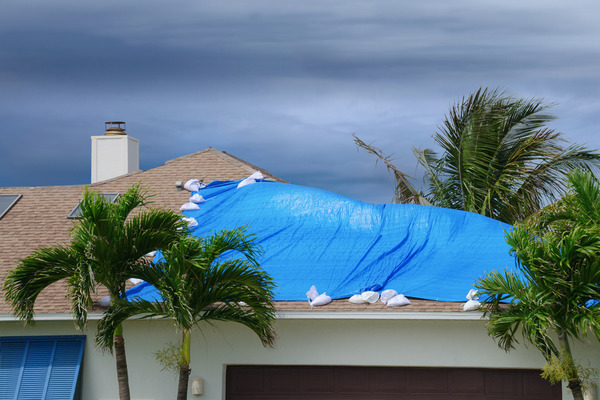Is Your Roof Hurricane-Proof? 7 Tips to Try This Hurricane Season
Posted: July 6th, 2023
Does Florida’s Hurricane Season Ever End?
According to the National Oceanic and Atmospheric Administration (NOAA), hurricane season comes around every year from June 1 through November 30; but sometimes it can feel like the threat of hurricanes is always just around the corner. Currently, we are one month into the 2023 hurricane season, which means it’s go-time for getting your storm preparations in place. Within the next few weeks, you should gather your non-perishable food supplies, draft your evacuation plan, and take steps to fortify your home against the elements.
The roof tends to take more damage than any other part of a home during a major storm. It’s the “lid” on the shelter and is exposed to falling trees and debris, high winds, and invasive, incessant water. Thus, it’s one of the most important parts of your home to inspect and bolster before a named hurricane begins its approach. Whether you’re new to the Space Coast or you’ve already seen your fair share of hurricanes, the following tips are applicable to homeowners in any size or shape of dwelling.
What to Do in the Months Before Hurricane Season
Avoid scrambling to prepare your home by knocking out these tasks well before hurricane season begins:
Schedule your annual roof inspection
A roof inspection may not be at the top of your yearly home maintenance checklist, but here in Central Florida, it’s a pretty important task to knock out. Schedule an appointment with a local roofing inspector who can check for leaks, damaged shingles or tiles, and any other vulnerabilities. This will give you plenty of time to knock out any necessary repairs well in advance of a storm’s arrival; otherwise, you’ll be left to deal with much more serious damage inside your home.
Inspect and trim your trees
If you have large trees anywhere on your property, it’s a good idea to have them inspected by an arborist every so often to ensure they’re healthy and not liable to crack or crumble under adverse weather conditions. You can also be proactive by trimming tree branches well away from your house. Even without coming detached from the tree trunk, a tree branch can cause enough damage by rubbing against your shingles in high winds. Be sure to remove any dead or oversized branches you see while you’re at it.
Keep your gutters clean
Even after the high winds and heavy downpour of a storm have passed, any standing water left behind can cause significant damage to your roof and the structure of your home. If you have clogged gutters, stormwater won’t properly be able to drain, and will eventually work its way through another avenue in your house. This is one of the easiest, yet most effective ways to keep your home safe during storms.
Review your insurance policy
Don’t be caught off guard by what your insurance policy actually covers when it’s time to start carrying out repairs. It’s a good idea to review your homeowner's insurance policy every year before hurricane season begins so you understand what it will cover in case of damages. Some insurers have a separate roof deductible in their policies. Some also offer special discounts for being proactive about hurricane preparation. Discuss with your insurance agent so you know all the options and benefits that are available to you.
When a Hurricane Starts Heading Your Way
As you begin the countdown for a hurricane to make landfall in your area, here are a few last-minute things you can do to help protect your roof.
Cover up your skylights
Homeowners often tend to overlook the fact that a skylight can be a serious vulnerability during a hurricane. Most skylights lead directly into your home, giving them the opportunity to cause immediate damage inside your home. Your trusted roofing professional should be able to tell you where to get covers that fit your skylights properly to prevent leaks and help protect you from debris and shattering glass.
Secure all outdoor furniture and loose items
In a battle between a wind-propelled trampoline and your roof, the trampoline would most likely win. If you can’t bring your outdoor furniture indoors, take extra precautions to secure it firmly in place. Any unsecured item outdoors can become a projectile, and when that projectile is hurled toward your property at over 70 miles per hour, the results can be dangerous.
Document your roof’s condition
Before the storm hits, it’s a great idea to take photographs and videos of the condition of the outside of your home. If you can get footage of your roof, that’s even better! In the event of any hurricane damage, you want to be able to provide your insurance company with proof that the damage was caused by the storm. Keep this info alongside other important documents, like your roof’s warranty, so that you don’t have to spend time searching for it when you need to repair.
Don’t Let Hurricane Season Blow You Away
Even though we experience hurricanes and other severe storms, Central Florida is still a wonderful place to live. Don’t let hurricane season deter you from enjoying the luxury coastal lifestyle! With some forethought and preparation, you’ll be able to stay safe and comfortable in your home year-round. If you’re ready to buy a home in Brevard County, call Ellingson Properties at 321-750-7050 today.

